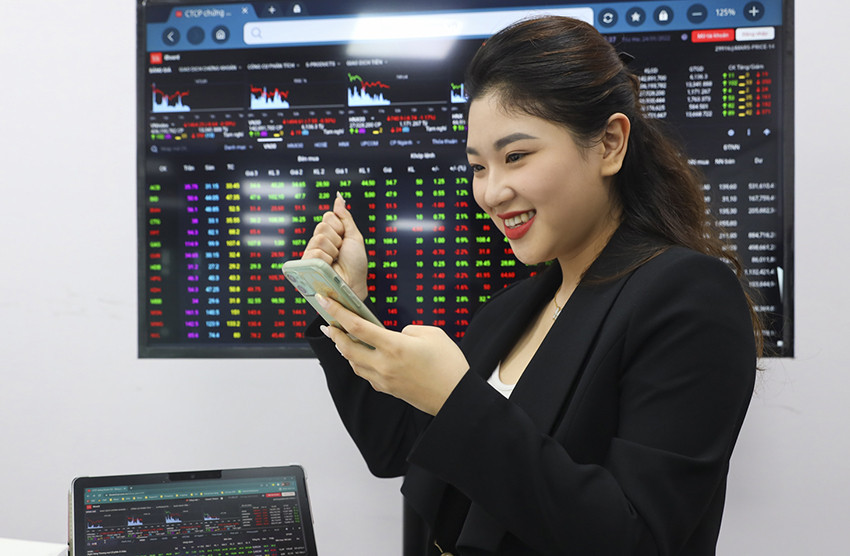
After four consecutive trading sessions of decreases, the VN-Index lost 90 points, falling to below the 1,140 point threshold. A lot of shares saw prices plunge, especially real estate and securities firms’ shares. However, demand on September 27 helped the VN-Index regain the support threshold of 1,150 points.
After three sessions of exploration, the State Bank of Vietnam (SBV) on September 26 withdrew VND20 trillion more from circulation through T-bond issuance.
The total net withdrawal from circulation in the last four sessions totaled VND50 trillion. The withdrawal interest rate increased slightly by 0.58 percent, a record low, which was 5-6 percent lower than in late 2022 and early 2023.
However, the withdrawn amount was not high compared with the withdrawal of VND25-35 trillion per session in December 2022 – March 2023. The liquidity of the banking system is strong.
The open market has been operating as usual, and this means SBV has not changed the monetary policy. The central bank is still pursuing a loosened monetary policy.
Since March 2023, SBV has cut operating interest rates by 150-200 points with a re-discount interest rate falling from 4.5 percent to 3 percent, re-financing interest rate from 6 percent to 4.5 percent and the interbank overnight interest rate from 7 percent to 5 percent. It also keeps purchasing dollars.
The central bank’s move of withdrawing money through the open market has been taken amid the dollar price increases since August (+ 3.3 percent). The increase is rapid, but not as sharp and risky as seen in October 2022.
The dong/dollar exchange rates quoted by commercial banks have not surpassed the peak of VND24,888 per dollar in October 2022. The current exchange rate is VND24,540 per dollar.
Meanwhile, credit has been growing very slowly, just 5.56 percent as of September 15. Commercial banks are still facing "money abundance".
The interbank overnight interest rates are still at a record low area though it slightly moved up from 0.14 percent (September 21) to 0.17 percent (September 35).
The interest rate climbed to nearly 6.5 percent in late May and reached a record high of 8.44 percent on October 5, 2022.
Experts said the central bank’s move aims to ease the short-term exchange rate speculation pressure. The withdrawal amount is not high and won’t cause liquidity problems in the tier-2 market, and won’t seriously impact interest rates in the tier-1 market.
According to MBS, the central bank’s move will push interbank interest rates to increase slightly and ease pressure on the dong/dollar exchange rate.
It believes that SBV will not withdraw too much money. FIDT, an investment consultancy firm, thinks that the withdrawal will be roughly VND100 trillion, or twice as much as the withdrawn volume in the last three sessions.
FIDT said the consistent viewpoint of the government and SBV is that interest rates must decline gradually. This means there is little possibility of large banks slashing their interest rates.
The interest rates are predicted to stay at current levels of 3.5 percent per annum for 3-6-month deposits, 4.5 percent for 6-12 month and 5.5 percent for over-12-month deposits. Meanwhile, there is no probability of core inflation reaching the 4.5 percent threshold.
FIDT said that macroeconomic signs are positive and Vietnam is capable of stabilizing the forex market in the medium and long term. The disbursement for foreign invested projects has slightly decreased, and new FDI is on the rise, while the trade surplus gained a record high and overseas remittances will be stable or see slight decreases as a result of the global economic slowdown.
According to Mirae Asset, the FED’s interest rate increase cycle is nearly finishing, the dollar is cooling down, thus easing the pressure on the dong/dollar exchange rate. Vietnam is believed to pursue a cautious monetary policy to maintain harmony between stabilizing the exchange rate and slashing lending interest rates.
Manh Ha